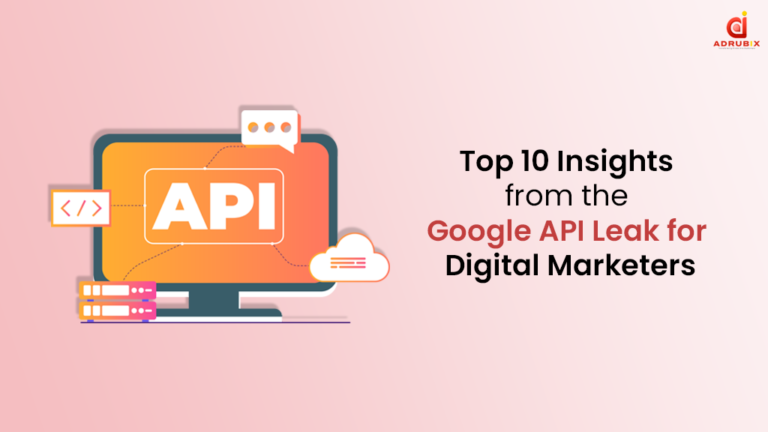In the fast-paced world of digital marketing, staying ahead of technological advancements is crucial for maintaining a competitive edge. Recent developments surrounding the Google API documentation leak have sparked significant interest within the marketing community. This unintentional release of internal documentation has provided digital marketers with a rare glimpse into upcoming features and capabilities that Google is preparing to roll out. While such leaks are often viewed with caution, they can offer valuable insights that help marketers plan and strategize more effectively.
In this blog, we will explore the top 10 takeaways from the Google API documentation leak and discuss how these revelations can impact digital marketing strategies. By understanding these developments, marketers can better position themselves to leverage new tools, optimise campaigns, and achieve greater success in their marketing efforts.
1. Enhanced Analytics Capabilities
One of the most significant revelations from the leak is the enhancement of Google’s analytics capabilities. For digital marketers, analytics is the backbone of decision-making, providing the data needed to understand user behaviour, measure campaign performance, and optimise strategies. The new updates in digital marketing analytics, as revealed in the leak, suggest that Google is introducing more granular tracking and reporting features.
These enhancements will allow marketers to dive deeper into user behaviour, gaining insights that were previously inaccessible. For example, with more detailed data on user interactions, marketers can better understand the customer journey, identify pain points, and optimise the user experience. This level of insight will enable more precise targeting, more effective campaigns, and ultimately, a higher return on investment (ROI).
2. Improved Ad Targeting
Another major takeaway from the leaked documentation is the improvement in ad targeting features. Ad targeting is a critical component of digital marketing, as it determines how effectively ads reach the intended audience. According to the leak, Google is enhancing its machine learning algorithms to provide more precise targeting options.
These improvements mean that marketers will be able to reach their desired audience with greater accuracy, reducing wasted ad spend and increasing the effectiveness of their campaigns. For instance, marketers may soon have the ability to target users based on more specific behaviors, such as recent purchases or engagement with certain types of content. This level of precision will enable marketers to craft more relevant and personalised ads, leading to higher conversion rates and better overall campaign performance.
3. Advanced Audience Segmentation
Audience segmentation is a powerful tool that allows marketers to divide their audience into distinct groups based on various criteria. The Google API documentation leak reveals that new advanced audience segmentation tools are on the horizon. These tools will enable marketers to segment their audience based on even more specific criteria, such as purchase behaviour, engagement levels, and predictive metrics.
With these advanced segmentation capabilities, marketers can create highly personalised marketing strategies that resonate more effectively with different segments of their audience. For example, a marketer could create a targeted campaign for users who have shown a high likelihood of making a purchase within the next 30 days, while creating a separate campaign for users who are still in the research phase. This level of customization will lead to more effective campaigns, higher engagement rates, and better ROI.
4. Enhanced API Integration
API integration plays a crucial role in digital marketing by allowing different tools and platforms to work together seamlessly. The leak also highlighted improvements in API integration capabilities, suggesting that Google is making it easier for marketers to integrate their tools and platforms with Google’s ecosystem.
These enhancements will streamline workflows, making it easier for marketers to manage data across different systems and improve overall campaign efficiency. For example, a marketer using multiple platforms for email marketing, social media management, and analytics could benefit from smoother data sharing between these systems, leading to more cohesive and effective marketing strategies.
5. Real-Time Data Processing
Real-time data processing is a game-changer in the digital marketing world. The ability to access and act on data as it is generated allows marketers to respond quickly to changes in campaign performance or shifts in user behaviour. The Google API documentation leak suggests that real-time data processing will soon become more accessible and integrated into Google’s suite of marketing tools.
This development means that marketers will be able to access up-to-the-minute insights and adjust their campaigns on the fly. For instance, if a marketer notices that a particular ad is underperforming, they can make immediate adjustments to the targeting or creative elements, rather than waiting for a traditional reporting cycle. This level of agility will allow for more responsive and effective marketing strategies.
6. Enhanced Privacy and Security Measures
Data privacy and security have become top priorities in digital marketing, especially with the increasing scrutiny from regulators and consumers alike. The Google API documentation leak highlights Google’s commitment to enhancing privacy and security measures in its tools and platforms.
These enhancements include more robust data encryption, improved user consent management, and better compliance with global data protection regulations. For marketers, this means they can continue to leverage Google’s tools with confidence, knowing that user data is being handled securely and in compliance with regulations like the General Data Protection Regulation (GDPR) and the California Consumer Privacy Act (CCPA).
Moreover, by prioritising privacy, marketers can build trust with their audience, which is increasingly important in today’s digital landscape. Consumers are becoming more aware of how their data is used, and brands that demonstrate a commitment to protecting that data will likely see stronger customer loyalty and higher engagement.
7. Improved Machine Learning Models
Machine learning is at the heart of many of Google’s digital marketing tools, powering everything from ad targeting to predictive analytics. The leak reveals that Google is working on improving its machine learning models, which will offer better predictive capabilities and more accurate insights.
For marketers, these improved models will enhance their ability to anticipate trends, forecast campaign performance, and understand consumer behaviour. For example, with more accurate predictive analytics, a marketer could better allocate their budget across different channels, knowing with greater certainty which channels are likely to deliver the best ROI. Additionally, these models could help marketers identify emerging trends and capitalise on them before their competitors do.
8. Enhanced Cross-Platform Capabilities
Digital marketing is increasingly a multi-platform endeavour, with campaigns spanning across mobile, desktop, social media, and even emerging technologies like augmented reality (AR) and virtual reality (VR). The Google API documentation leak suggests that Google is enhancing its cross-platform capabilities, making it easier for marketers to manage campaigns across different platforms.
This holistic approach to campaign management will ensure a consistent and unified brand experience across all touchpoints. For instance, a marketer could seamlessly integrate a campaign across mobile and desktop, ensuring that users receive a consistent message regardless of the device they are using. Additionally, these enhancements will make it easier to track and measure the performance of campaigns across different platforms, leading to more informed decision-making.
9. New Tools for Creative Optimization
Creativity is a crucial element of successful digital marketing campaigns. The ability to create compelling and engaging content can make the difference between a campaign that resonates with its audience and one that falls flat. According to the Google API documentation leak, new tools for creative optimization are on the way, which will help marketers test and refine their creative assets more effectively.
These tools will enable marketers to conduct A/B testing on different creative elements, such as headlines, images, and calls to action, to determine which versions perform best. Additionally, dynamic content optimization tools will allow marketers to tailor their creative assets to different audience segments automatically. By leveraging these tools, marketers can create more effective ads that drive higher engagement and conversion rates.
10. Enhanced Reporting and Visualization
Reporting and data visualisation are essential components of digital marketing, as they allow marketers to track performance, measure ROI, and share insights with stakeholders. The Google API documentation leak indicates that Google is introducing more intuitive and customizable reporting dashboards, making it easier for marketers to analyse data and present it in a visually compelling way.
These enhanced reporting capabilities will help marketers demonstrate the value of their campaigns and make more informed strategic decisions. For example, with customizable dashboards, a marketer could create reports tailored to the specific needs of different stakeholders, whether it’s a high-level overview for executives or a detailed analysis for the marketing team. Additionally, improved visualisation tools will make it easier to identify trends and patterns in the data, leading to more effective optimization efforts.
Conclusion
The Google API documentation leak has unveiled a range of exciting new features and updates that are set to transform the digital marketing landscape. From enhanced analytics and ad targeting to improved machine learning models and creative optimization tools, these updates offer significant opportunities for marketers to enhance their campaigns and drive better results.
As these new capabilities become available, it’s essential for digital marketers to stay informed and prepare to leverage them effectively. By incorporating these features into their strategies, marketers can stay ahead of the competition, optimise their campaigns for better performance, and achieve their marketing goals.





